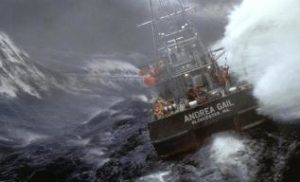The highest rogue wave in history was recorded in the North Pacific Ocean. It received its own name – “Ucluele” and was recorded by a buoy of the MarineLabs project. Scientists believe wave heights in the North Pacific will only increase with climate change.
The wave recorded off the coast of British Columbia was 17.6 m high, while other waves were about 6 m high. That is, its relative size was unprecedented. This wave did not cause damage to people or structures, but there are many cases where rogue waves lived up to their name. Thus, it is believed that some ships that went missing in the 1970s were sunk by similar waves. These waves also destroyed several oil platforms and wind farms.
Until recently, rogue waves were considered a myth that even many experienced sailors did not believe. Many of the witnesses became victims of a huge wave, and those eyewitnesses who were lucky enough to survive could not provide any evidence. But on January 1, 1995, a rogue wave was first recorded by instruments, and this phenomenon moved from the category of legend to the category of objects of scientific research.
The Brockhaus and Efron Encyclopedic Dictionary reports that the largest waves occur in the westerly wind region of the Indian Ocean (11.5 m) and in the eastern part of the Pacific Ocean (7.5 m). Once such waves were observed off the Azores (15 m) and in the Pacific Ocean between New Zealand and South America (14 m).
But rogue waves are not tsunamis, which gain full strength only off the coast. Robber waves, unlike tsunamis, gain the required amplitude and height right in the middle of the ocean. The danger of a tsunami, therefore, does not threaten ships in the open ocean, but coastal areas of land, primarily port facilities, coastal settlements and industrial facilities, as well as ships at the berth. In the deep ocean, the height of tsunami waves does not exceed tens of centimeters; on the shelf, the waves slow down, shorten, their height increases, and in the surf zone their height can reach tens of meters. Modern science is not yet able to predict the height of a tsunami offshore with sufficient accuracy.





